
How to Use buck - boost module: Examples, Pinouts, and Specs
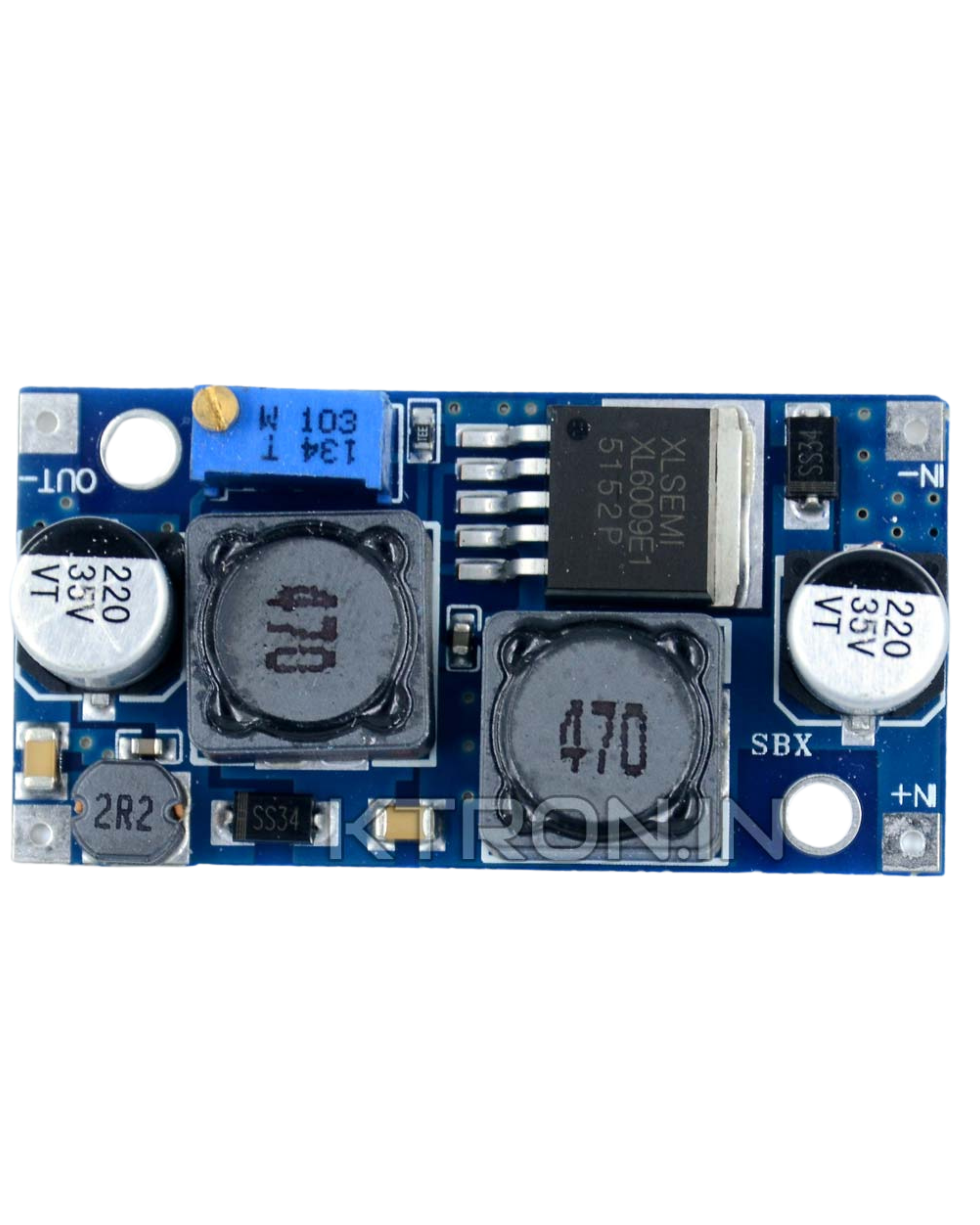
 Design with buck - boost module in Cirkit Designer
Design with buck - boost module in Cirkit DesignerIntroduction
A buck-boost module is a type of DC-DC converter that can step up (boost) or step down (buck) an input voltage to a desired output voltage level. This versatility makes it an essential component in power supply applications where the input voltage may vary but a stable output voltage is required. Manufactured by Arduino with the part ID "UNO," this module is designed for seamless integration into a variety of electronic projects.
Explore Projects Built with buck - boost module
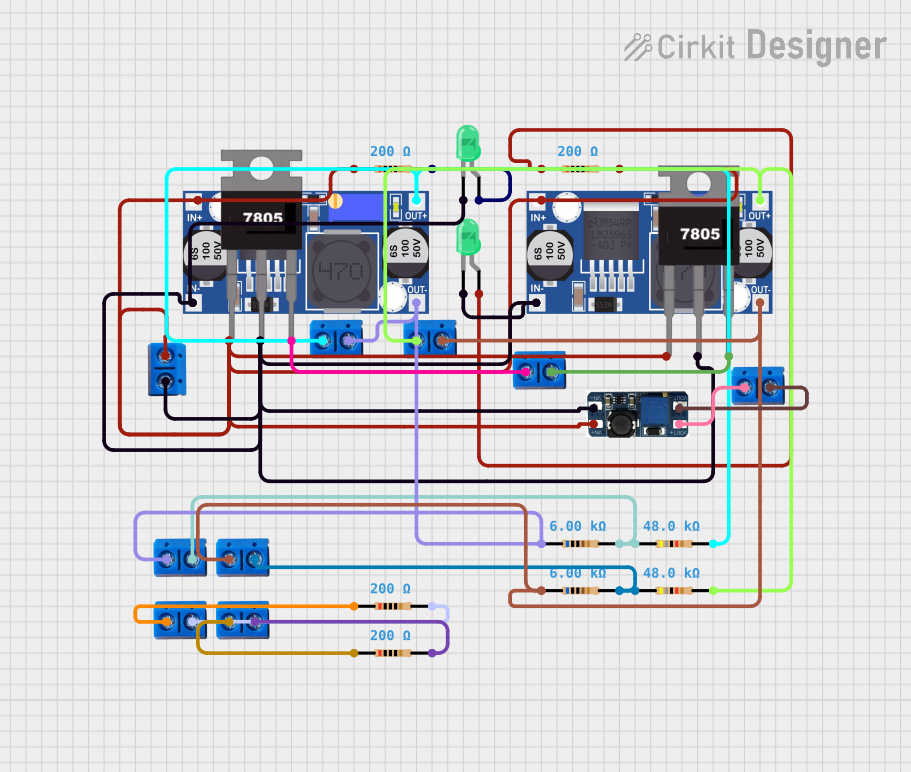
 Open Project in Cirkit Designer
Open Project in Cirkit Designer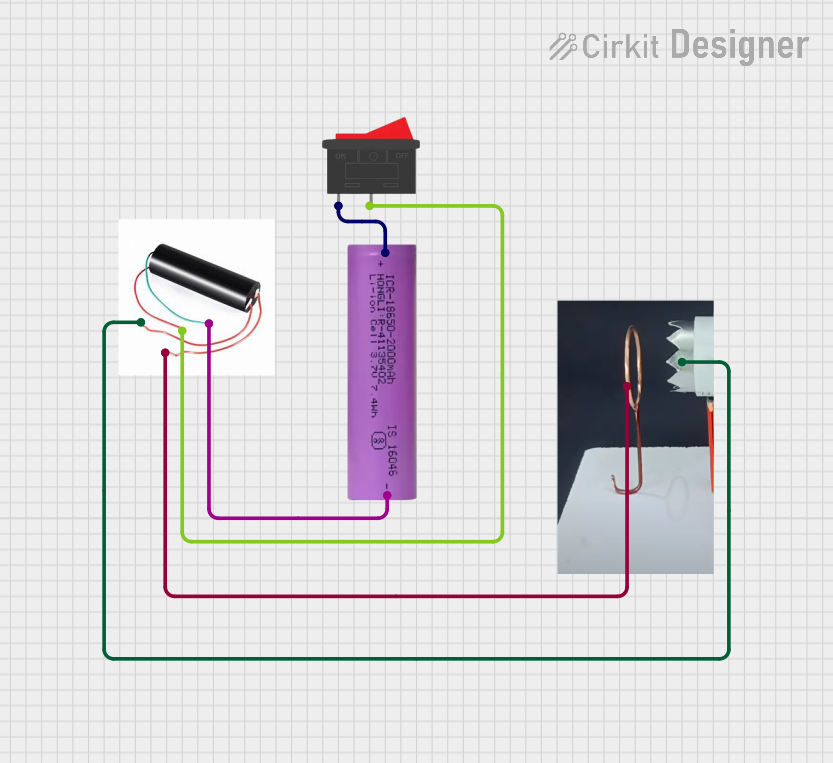
 Open Project in Cirkit Designer
Open Project in Cirkit Designer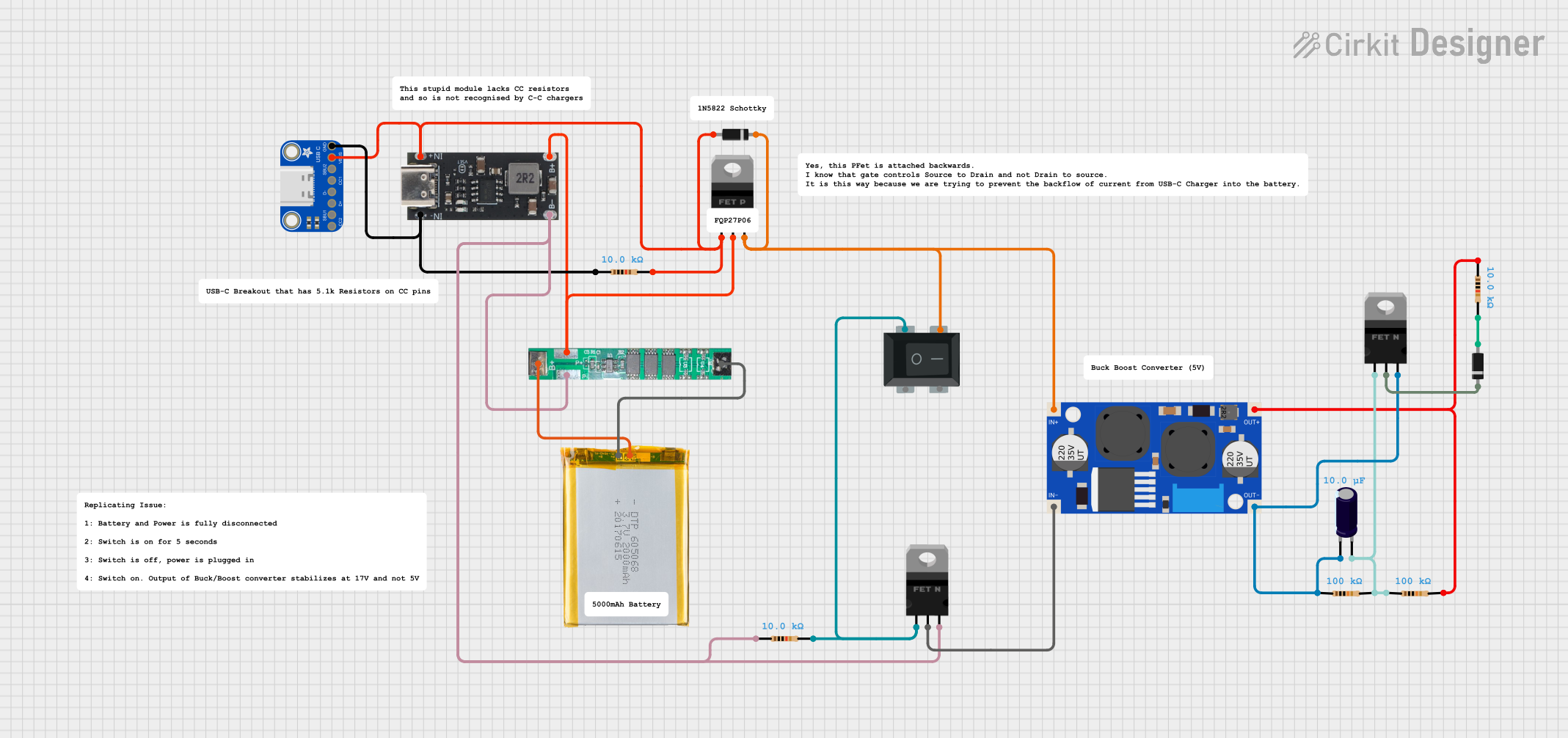
 Open Project in Cirkit Designer
Open Project in Cirkit Designer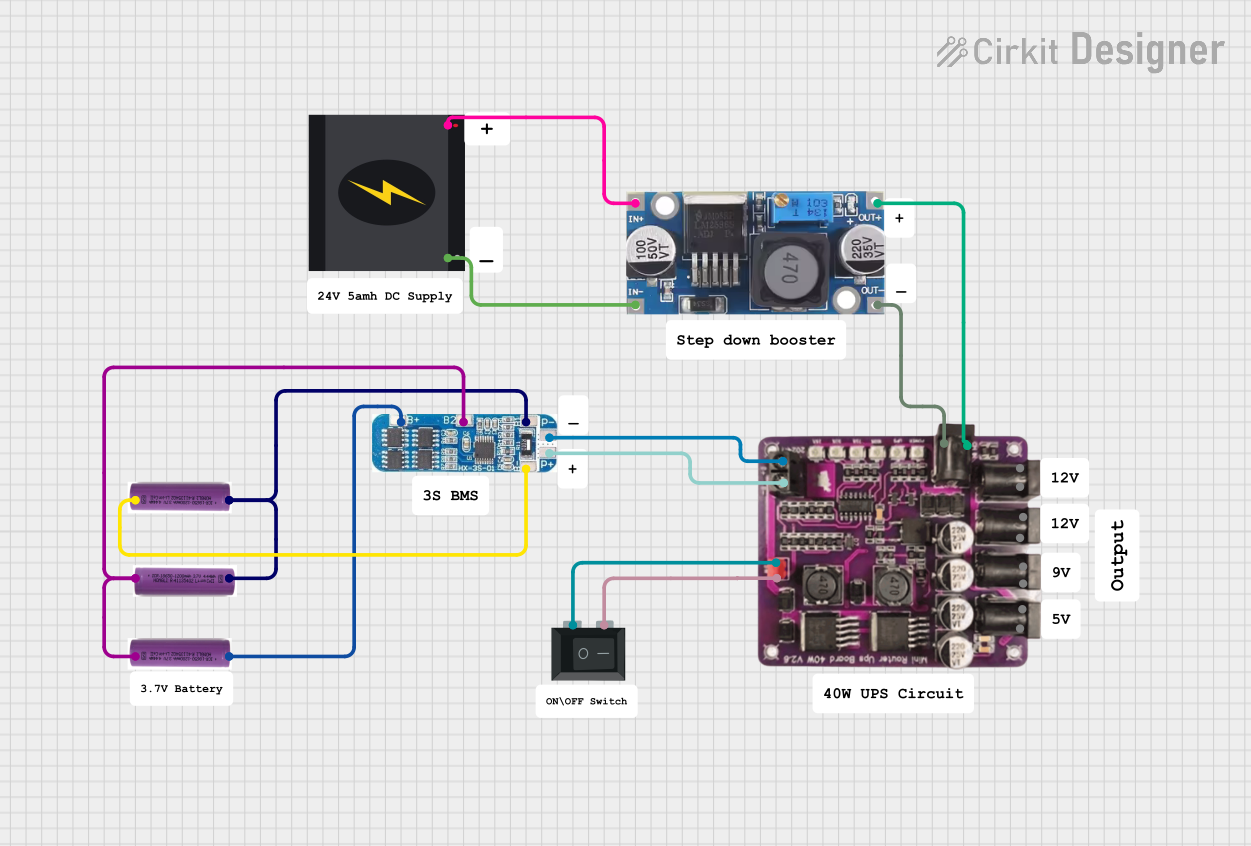
 Open Project in Cirkit Designer
Open Project in Cirkit DesignerExplore Projects Built with buck - boost module

 Open Project in Cirkit Designer
Open Project in Cirkit Designer
 Open Project in Cirkit Designer
Open Project in Cirkit Designer
 Open Project in Cirkit Designer
Open Project in Cirkit Designer
 Open Project in Cirkit Designer
Open Project in Cirkit DesignerCommon Applications and Use Cases
- Battery-powered devices where the input voltage fluctuates (e.g., lithium-ion batteries)
- Solar power systems to regulate voltage from solar panels
- Embedded systems requiring a stable voltage supply
- Powering microcontrollers and sensors in IoT applications
- Portable electronics and USB-powered devices
Technical Specifications
The Arduino Buck-Boost Module (Part ID: UNO) is designed to provide reliable voltage regulation with the following specifications:
Key Technical Details
| Parameter | Value |
|---|---|
| Input Voltage Range | 3V to 35V |
| Output Voltage Range | 1.25V to 35V |
| Maximum Output Current | 3A (with proper heat dissipation) |
| Efficiency | Up to 92% |
| Switching Frequency | 150 kHz |
| Operating Temperature | -40°C to +85°C |
| Dimensions | 43mm x 21mm x 14mm |
Pin Configuration and Descriptions
| Pin Name | Description |
|---|---|
| VIN+ | Positive input voltage terminal (connect to the power source) |
| VIN- | Negative input voltage terminal (connect to the ground of the power source) |
| VOUT+ | Positive output voltage terminal (connect to the load) |
| VOUT- | Negative output voltage terminal (connect to the ground of the load) |
| ADJ | Voltage adjustment pin (used to set the desired output voltage) |
Usage Instructions
How to Use the Component in a Circuit
Connect the Input Voltage:
- Connect the positive terminal of your power source to the
VIN+pin. - Connect the ground of your power source to the
VIN-pin.
- Connect the positive terminal of your power source to the
Connect the Output Voltage:
- Connect the positive terminal of your load to the
VOUT+pin. - Connect the ground of your load to the
VOUT-pin.
- Connect the positive terminal of your load to the
Adjust the Output Voltage:
- Use a small screwdriver to turn the potentiometer connected to the
ADJpin. - Turning clockwise increases the output voltage, while turning counterclockwise decreases it.
- Use a multimeter to measure the output voltage and adjust it to the desired level.
- Use a small screwdriver to turn the potentiometer connected to the
Power On:
- Once all connections are secure, power on the module by supplying input voltage within the specified range.
Important Considerations and Best Practices
- Ensure the input voltage is within the specified range (3V to 35V) to avoid damaging the module.
- Use proper heat dissipation (e.g., a heatsink) if the output current exceeds 2A to prevent overheating.
- Always measure the output voltage with a multimeter before connecting sensitive devices.
- Avoid short-circuiting the output terminals, as this may damage the module.
- For applications requiring precise voltage regulation, use a stable input power source.
Example: Connecting to an Arduino UNO
The buck-boost module can be used to power an Arduino UNO by providing a stable 5V output. Below is an example of how to connect the module and configure it:
- Set the output voltage of the buck-boost module to 5V using the
ADJpin. - Connect the
VOUT+pin of the module to the 5V pin of the Arduino UNO. - Connect the
VOUT-pin of the module to the GND pin of the Arduino UNO. - Connect the input voltage source (e.g., a 9V battery) to the
VIN+andVIN-pins of the module.
Example Code for Arduino UNO
// Example code to read a sensor powered by the buck-boost module
// Ensure the buck-boost module is set to 5V output before connecting to the Arduino
const int sensorPin = A0; // Analog pin connected to the sensor
int sensorValue = 0; // Variable to store the sensor reading
void setup() {
Serial.begin(9600); // Initialize serial communication at 9600 baud
pinMode(sensorPin, INPUT); // Set the sensor pin as input
}
void loop() {
sensorValue = analogRead(sensorPin); // Read the sensor value
Serial.print("Sensor Value: ");
Serial.println(sensorValue); // Print the sensor value to the Serial Monitor
delay(1000); // Wait for 1 second before the next reading
}
Troubleshooting and FAQs
Common Issues and Solutions
No Output Voltage:
- Cause: Input voltage is not connected or is outside the specified range.
- Solution: Verify the input voltage is within 3V to 35V and check the connections.
Output Voltage is Incorrect:
- Cause: The potentiometer is not adjusted correctly.
- Solution: Use a multimeter to measure the output voltage and adjust the
ADJpin.
Module Overheating:
- Cause: Output current exceeds 2A without proper heat dissipation.
- Solution: Attach a heatsink or reduce the load current.
Fluctuating Output Voltage:
- Cause: Unstable input voltage or insufficient input filtering.
- Solution: Use a capacitor (e.g., 100µF) across the input terminals to stabilize the input voltage.
FAQs
Q: Can the module be used to charge batteries?
A: Yes, but ensure the output voltage is set to the appropriate charging voltage for the battery type.
Q: What happens if the input voltage is higher than the output voltage?
A: The module will operate in buck mode to step down the voltage.
Q: Can I use this module with a solar panel?
A: Yes, the module is suitable for solar applications. Ensure the input voltage from the solar panel is within the specified range.
Q: Is the module protected against reverse polarity?
A: No, the module does not have built-in reverse polarity protection. Always double-check the connections before powering on.